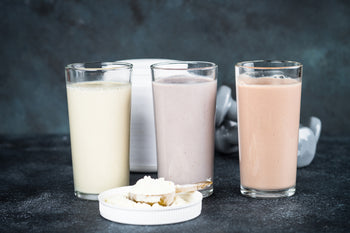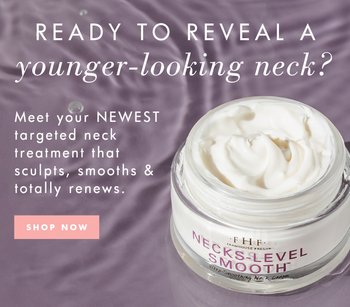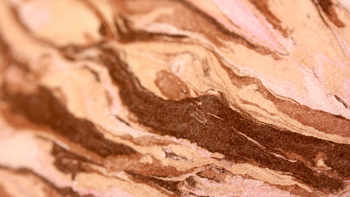 Categories
CategoriesDiet & Exercise
Discover More Articles

It’s no secret that stress can take a toll on our body, mind, and brain. December is not the month to throw your self-care and mental health priorities out the window.

5 Ways to Stay Motivated This Winter
When the seasons change it suddenly becomes harder to get out and exercise. Winter fitness programs aren’t the easiest to stick to, but they’re imperative to your overall health and well-being. So with that in mind, let’s take a look at what you can do to stay motivated and successful with your winter fitness goals.

How to Detox After Holiday Feasts
If you’re having a hard time committing to your diet over the holidays, you’re not alone. And the good news is you don’t have to be perfect to maintain your weight over the holiday season. Try following these simple detox tips after each scrumptious holiday meal and start the new year fresh and ready to finally achieve your health and fitness goals.

High Protein Meal Replacement Shakes
Meal replacement shakes aren’t just low in calories, they’re high in essential nutrients your body needs to keep yourself nourished and your stomach feeling full, while helping also you maintain or lose weight. Protein provides numerous benefits to your body, including fueling the entire body, helping build muscle mass and being a key component to essential substances your body needs, like antibodies and blood.

Skin Cycling: all about the newest trend
The skin cycling hashtag has been viewed over 3 billion times on TikTok—and dermatologists say it's a strategy worth trying.The term "skin cycling" is all about taking a cyclical approach to your facial skincare routine.

Get ready for a plumper, perkier-looking neckline
Meet our new luscious neck cream featuring our proprietary elasticizing bioactive plant blend that targets lines and texture, so your neckline appears smoother, renewed & 10 years younger looking!

TRENDING MAKEUP HACK: BLUSH & BRONZER AS EYESHADOW
By selecting shades that complement each other, you can achieve a harmonious and polished makeup look without the need for multiple products.

5 signs you need more electrolytes
Electrolytes help with hydration by ensuring the body can actually absorb and use the water you drink—preventing dehydration in the presence of sufficient water intake.

Ring In 2025 With ✨ Glowing ✨ Skin…And FREE Boosters!

Better Ingredients, Better You
Your health goals aren’t one-size-fits-all, so your supplements shouldn’t be either. That’s why we designed the Power Line to target different pillars of performance and wellness — from appetite control to anti-aging to athletic power.

Do you ever find yourself plucking hairs from your head, eyebrows, or eyelashes? Do you do it repeatedly to the point that you have patchy bald spots or noticeable hair loss? You may have trichotillomania, a mental health disorder that involves compulsively yanking out hair despite efforts to stop doing so.
SYMPTOMS OF TRICHOTILLOMANIA
There are many signs and symptoms of trichotillomania, including:
- Frequently pulling hair from body areas, such as the scalp, eyebrows, or eyelashes
- Feelings of anxiety or tension prior to plucking out hair
- A sense of anxiousness, tension, or discomfort when trying to refrain from pulling hair
- Feelings of relief after pulling out hair
- Thinning or sparse hair, noticeable hair loss, or patches of baldness
- Eating, chewing, or biting hair that has been pulled out
- Rituals related to hair pulling, such as searching out specific types of hair to pull or playing with hair after it’s been pulled out
- Making repeated efforts to stop the behavior but feeling compelled to do it anyway
- Feeling discomfort or distress about having others notice the habit or the signs of hair loss
- Interferes with social functioning and at work, school, or home life
For some people, hair pulling is automatic, and they don’t even realize they are doing it. For others, it is a very focused activity that helps release tension. Individuals with this condition may also engage in other compulsive behaviors, such as biting their nails, skin picking, or chewing their lips. Sampaio says, “I tend to pick my lips a lot as well, and now I feel the need to do certain body movements.” She adds that “I just have so much tension everywhere that I feel like it just releases it.”
TRICHOTILLOMANIA AND OCD
Trichotillomania is considered to be a form of obsessive-compulsive disorder (OCD) and is believed to be related to anxiety. OCD is characterized by intrusive thoughts (obsessions) that cause distress and repeated behaviors (compulsions) that provide relief from that distress.
Obsessions are recurrent thoughts that trigger unpleasant feelings of anxiety, fear, or disgust. Common thoughts include fears about germs or contamination, harm or violence, forbidden sexuality, or religion. Some weird signs of OCD include worrying about the way you breathe or being afraid you’ll steal something. Some people can’t stop thinking about dying. There is a subtype of OCD called death anxiety OCD when a person is obsessed with thoughts about their own death or the death of a loved one. Sampaio says the death of her grandfather triggered a fear of dying. “All of a sudden, I just had this big, overwhelming fear of dying,” she says.
People with OCD engage in repetitive behaviors (compulsions) to calm feelings of distress. Common compulsions include excessive hand washing, extreme cleaning, counting, repeated touching, and more. In many cases, the compulsions must be performed in a ritualistic manner.
When left untreated, unwanted thoughts and compulsive actions can interfere with daily life and cause problems in relationships, careers, and in academic endeavors. When people eat their hair, it can form a large, matted hairball—called a trichobezoar—in the digestive tract. This can cause vomiting, weight loss, intestinal blockage, and in extreme cases, death.
TRICHOTILLOMANIA, OCD, AND THE BRAIN
In people with trichotillomania, brain imaging studies have shown abnormalities in activity in certain regions of the brain, including areas involved in regulating impulses and habits, emotional processing, and reward processing. Neuroimaging research also points to abnormal activity in those with OCD.
At Amen Clinics, brain SPECT imaging scans of individuals with OCD show abnormal blood flow in some brain regions. SPECT (single photon emission computed tomography) is a nuclear medicine study that evaluates blood flow and activity in the brain. Basically, it shows three things: areas of the brain with healthy activity, too little activity, or too much activity. SPECT scans of those with OCD show increased activity in the following two regions:
- Anterior cingulate gyrus (ACG): This brain region acts like a gear shifter, helping people go from one thought to another or from one action to another. Too much activity in the ACG is associated with getting “stuck” on recurrent thoughts or behaviors.
- Basal ganglia: This area of the brain is involved in setting the body’s anxiety level and in the formation of habits. Overactivity in this region is associated with increased anxiety and fear.
The brain imaging work at Amen Clinics shows what many doctors miss about OCD—the fact that there is more than a single brain pattern associated with it.
TREATING TRICHOTILLOMANIA AND OCD
Treating trichotillomania and OCD requires a multi-modal approach that may include the following:
- Cognitive behavioral therapy: A form of psychotherapy, CBT can be beneficial in changing unwanted habits and behaviors.
- Stress-management techniques: Learning healthier ways to manage stress can be helpful in calming distressing thoughts and fears.
- Getting “unstuck:” Implementing strategies to “get unstuck” and improve cognitive flexibility can help you shift away from unwanted thoughts.
- Physical exercise: Multiple studies have demonstrated that physical activity can boost cognitive flexibility and enhance moods.
- Nutraceuticals: Among the nutritional supplements that help calm an overactive brain are saffron, 5-HTP, l-tryptophan, St. John’s Wort, and magnesium.
- Medications: In some cases, medications such as antidepressants may be an effective part of a comprehensive treatment program.
With treatment that is targeted to your brain and individual needs, it is possible to stop struggling with disorders such as hair pulling and other OCD-related obsessions and compulsive behaviors.
Trichotillomania, OCD, and other mental health issues can’t wait. At Amen Clinics, we’re here for you.
We offer in-clinic brain scanning and appointments, as well as mental telehealth, clinical evaluations, and therapy for adults, teens, children, and couples.
Find out more by speaking to a specialist today at 833-802-6182 or visit our contact page here.
